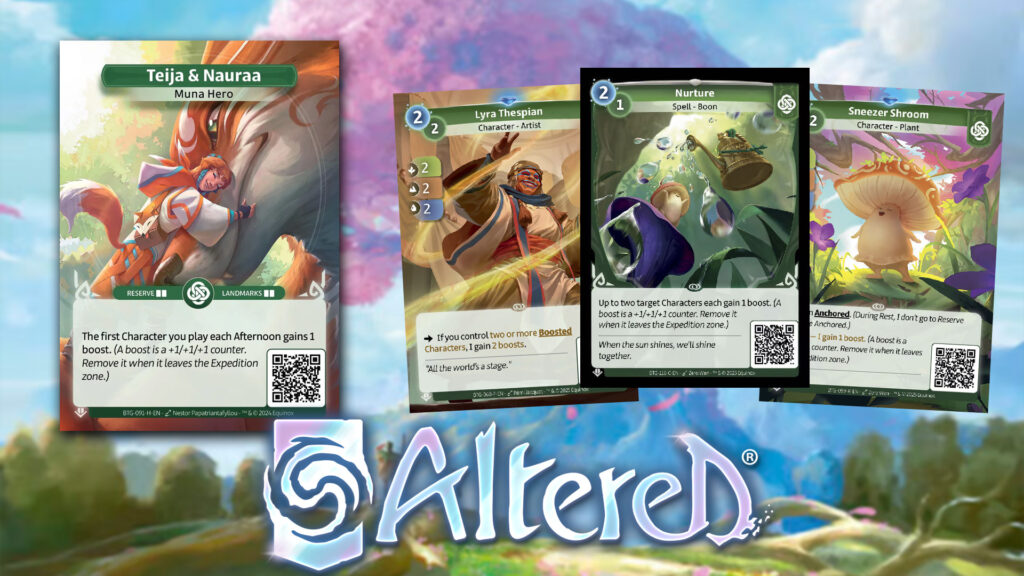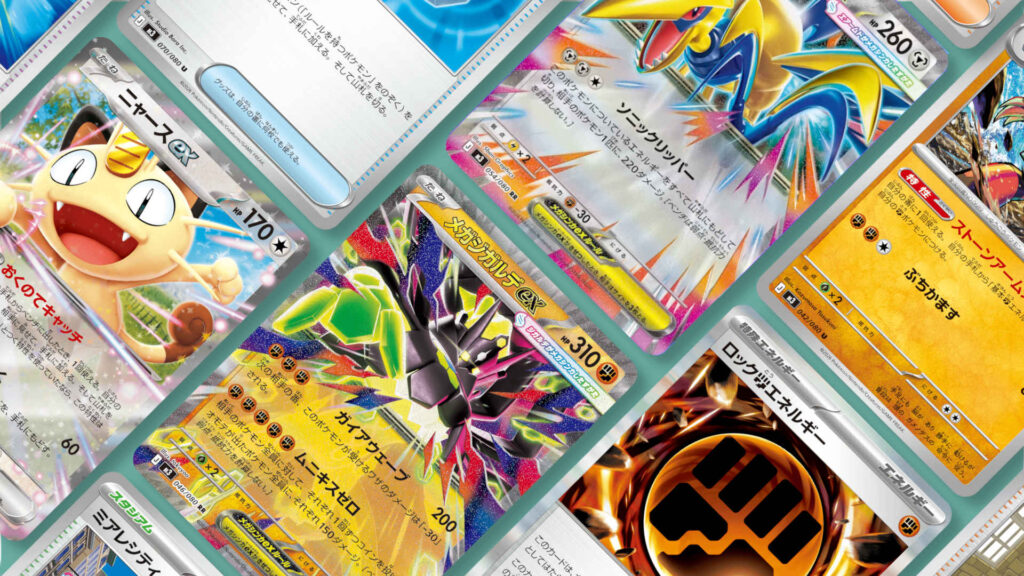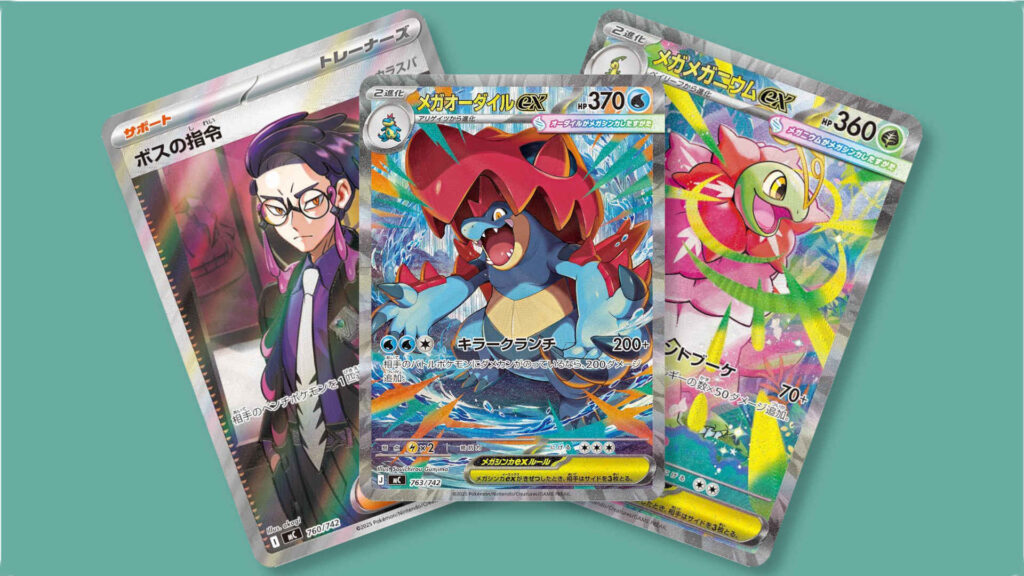Hello everyone, and welcome back to another Altered TCG article in what I hope to be the first in a series of deep dives into constructed decks. To kick us off, I’ll be going over my current favorite deck to play, and my weapon of choice for the upcoming Tumult Championships: Teija Plant Stompy.
The deck is low to the ground, synergistic, and has a straightforward but effective game plan so let’s get right into it!
Table of Contents
ToggleTeija Plant Stompy Deck List
Hero
1x Teija & Nauraa
Characters
3x Dracaena (c)
3x Snoozer Shroom (c)
1x Kodama (c)
3x Muna Druid (c)
3x Muna Caregiver (c)
3x Sneezer Shroom (r)
3x Ogun (r)
3x Spindle Harvester (r)
3x Aloe Vera (r)
2x Lyra Thespian (r, f)
Spells
3x Lost in the Woods (c)
2x Nurture
1x Sow
1x Beauty Sleep
Permanents
3x Floral Tent (c)
1x The Spindle, Muna Bastion (c)
1x The Spindle, Muna Bastion (r)
Teija Plant Stompy Overview

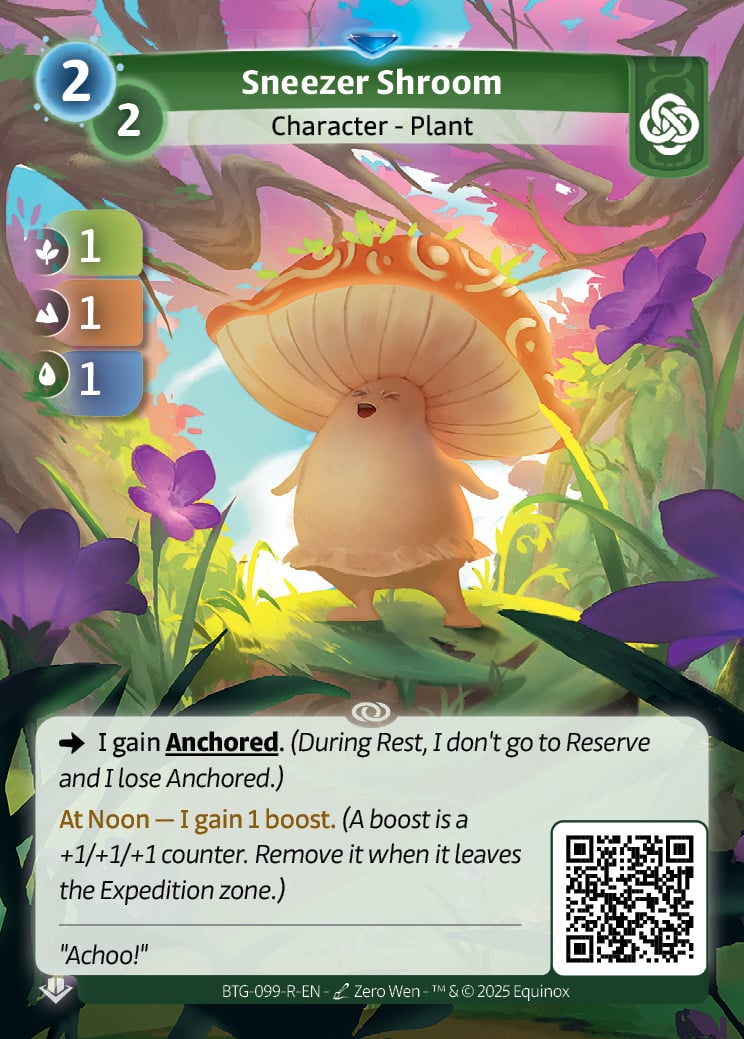
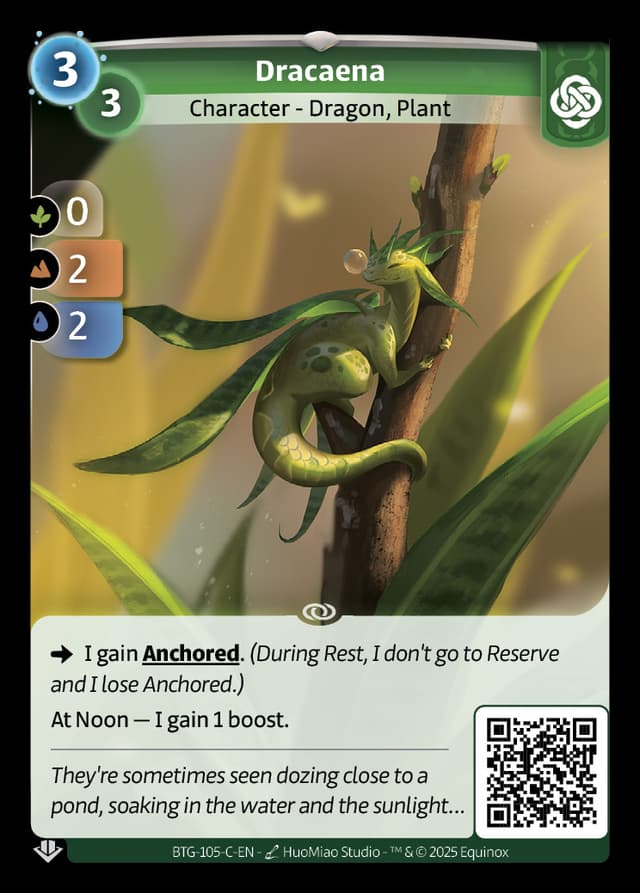
The deck’s game plan is shockingly simple: Anchor a big threat, Resupply a ton, and bury the opponent in cards and raw stats. This is facilitated by Teija’s ability of putting boosts onto the first character played in the turn, which can start the snowball on the characters that passively gain boosts at Noon.
Strengths:
- Capable of generating card advantage while maintaining board presence in a lane
- Many potential ways to have powerful starts to start the Resupply chains
- Multiple ways to insulate your threats from removal spells
Weaknesses:
- Can occasionally open some very clunky hands due to combinations of odd and even mana costs
- Removal in Muna comes at an extreme premium and can be a deciding factor in a game
- Your anchored characters oftentimes go into reserve at the same time, so managing the reserve and taking care to not overflow is important
- Sequencing changes drastically depending on what you Resupply into
The main weakness with the deck is managing your reserve and ensuring all your Anchored characters aren’t coming back the same turn, in addition to whatever characters and spells you’ve played during the day. Make sure you’ve always got a way to clear cards out of your reserve, either through reserve abilities or taking a turn off to develop characters out of there rather than committing to more Anchored characters from hand with no plan to ensure they remain in play.
The second issue is you have to just prepare for a wider range of potential turn sequences due to the amount of cards being Resupplied. When deciding which card to put into mana, try to plan out the scenarios of what happens when the card that gets Resupplied costs three mana or is a character that needs critical mass, like Ogun, to be effective.
There’s rarely a correct answer in these situations, you just need to get used to thinking that way and preparing for the best, the worst, and the average outcomes.
Rare Selection
The 15 rares here are non-negotiable. Each individual card here provides utility either in the form of the two Resuppliers in Spindle Harvester and Aloe Vera, or raw stats in the case of the other characters. The rare Spindle may seem like a strange inclusion here, but if I had a unique for any of these characters to free up a rare slot, I’d immediately upgrade the second Spindle to rare. Beyond the protection from giving all your characters Tough, the interaction between the boost at Noon and Spindle Harvester allows for extra resupplying, which is a great way to continue the stream of cards.
Characters
The characters here fill one of two purposes: providing advantage either in the form of Anchoring or Resupplying, or dumping a whole lot of boosts, with some of them having a foot in both roles. Let’s quickly run through all the key characters in the deck and how they work with the game plan.
Muna Druid and Caregiver are the backbone of the deck as they allow the constant stream of Anchoring that in turn leads to more Resupply or more boosts. Druid in particular is a great turn-one play with Teija’s boost bumping him to 4/3/3 stats that make it almost a guaranteed advancement in one expedition. Caregiver is less good early, but costing one mana makes it an easy card to sneak into a turn sequence.
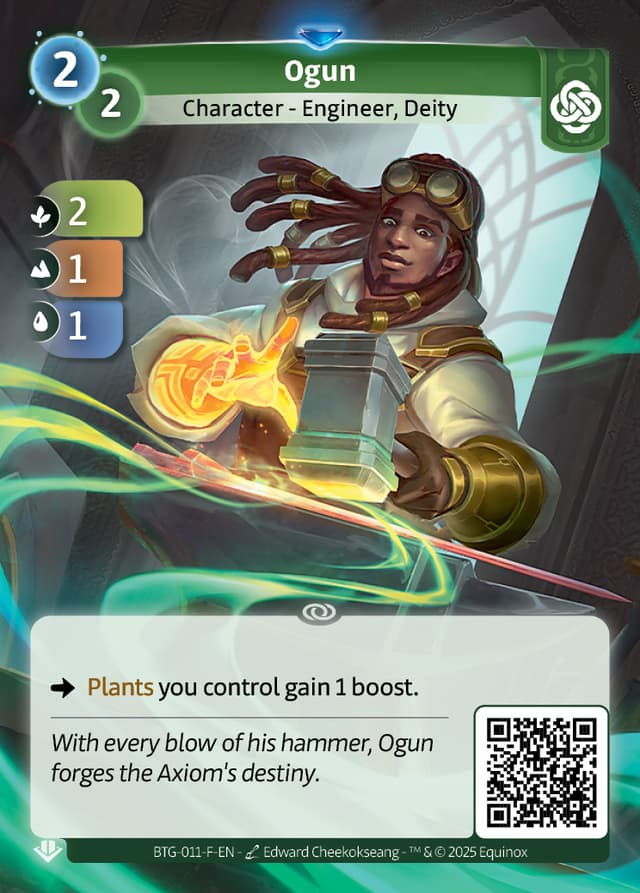
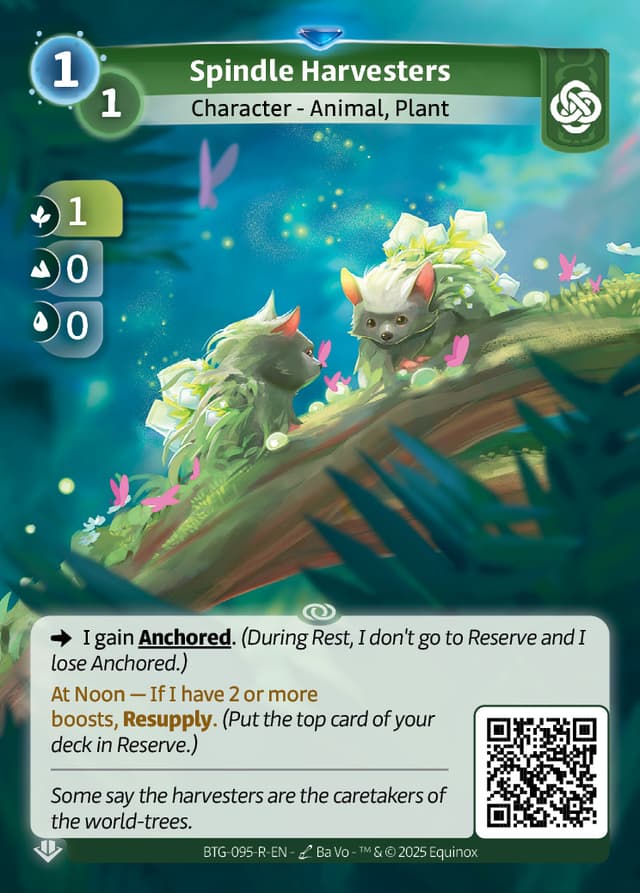
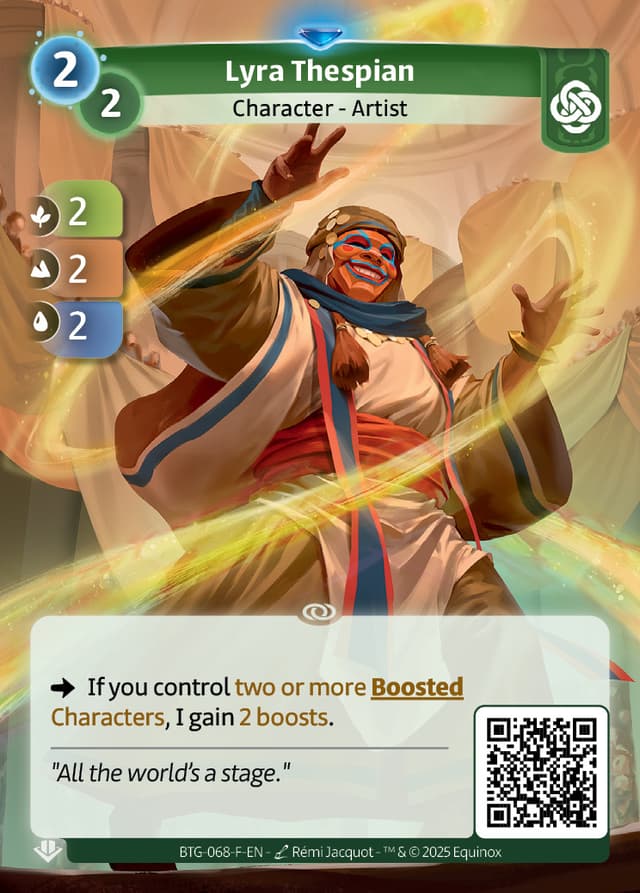
The self-anchoring characters Dracaena, Sneezer Shroom, Spindle Harvester, and Aloe Vera all obviously gain huge upside from Teija’s boost due to staying around for an extra turn, but also work well in allowing you to push for double advances more frequently by leveraging their Anchored status and playing out any cards you may Resupply into at Noon from reserve. This in turn leads to more options in hand, and a wider range of play patterns you can take, depending on the Resupply hits.
Ogun functions as a Charge that also commits a body, and is fantastic at closing out a game when pushing for a double advance, and Lyra Thespian is a cheaply costed character with a huge body. Another neat interaction with the Thespian is if it happens to be the first character of the turn when there’s already a boosted character in play from a previous turn, it will see itself as the second boosted character due to Teija’s ability and become a 5/5/5.
Speaking of Teija’s boost, the way Spindle Harvester’s ability is worded means that it’ll check at Noon, regardless of how many boosts it has, meaning you can stack it so that it gains the second boost from the Spindle before Resupplying. In this deck, Teija’s can effectively turn all of your characters into having a high enough stats in at least one statistic, that even a card like Snoozer Shroom with the boost is fighting up on forests against potentially two or more characters that the opponent needs to commit.
In terms of statistics, the deck is weakest when fighting for mountains, with a few characters having a base stat of two but not much else. I’d recommend trying to stick a boosted Dracaena down in those areas if you know it’s coming up on the Tumult tracker if there’s no access to an all-rounder like Sneezer Shroom.
Spells

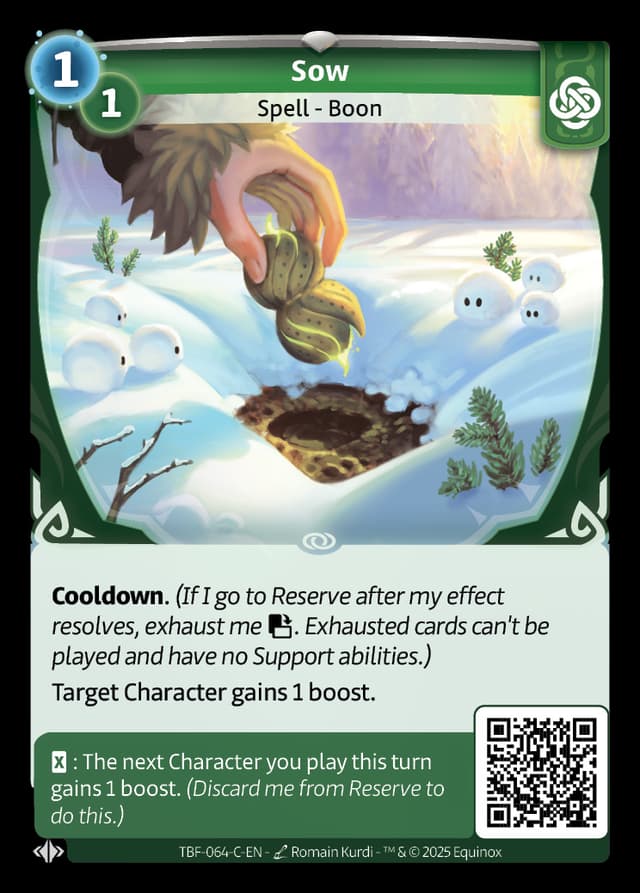
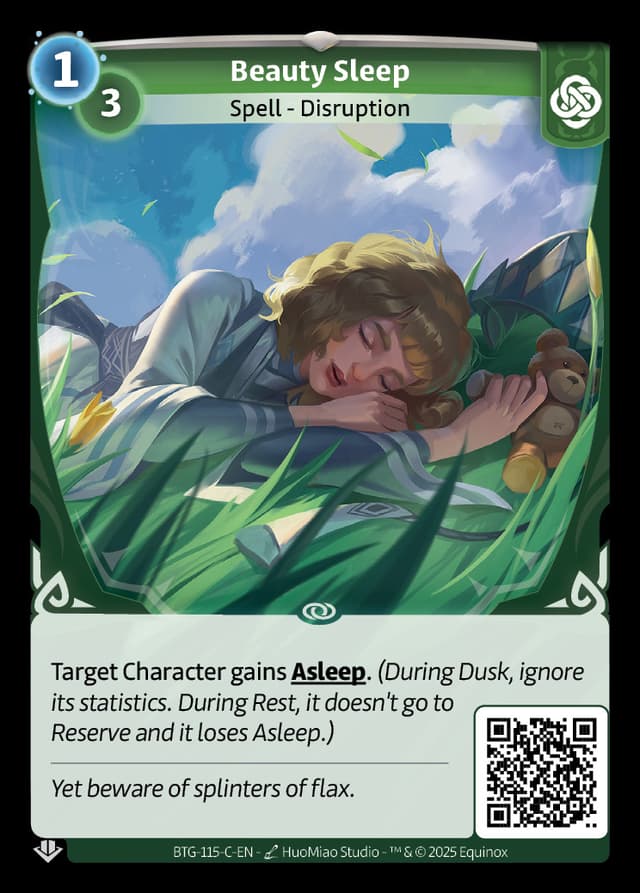
The spells are painfully straightforward, which furthers this deck as being a very streamlined and lean aggressive deck. Cards like Lost in the Wood are not good for rate purposes, but it’s a type of removal that doesn’t care about hand-cost, meaning it can hit any character if they’re in a forest expedition. The unconditional removal for permanents however, is where this card really shines, particularly in answering The Monolith, Ordis Bastion, which can come out as early as the second turn. Otherwise, it’s usually a card that goes into mana quite quickly, but that’s part of the beauty of the deck; your characters are almost always good enough by themselves that they don’t require spells to back them up.
The singular copy of Beauty Sleep is really close on the precipice of getting cut, but sometimes there are situations in the endgame where paying four mana to put two characters to sleep is what pushes you over the edge for the win. I will say that having all these removal spells makes the Sigismar matchup worse, as even though they make for easy decisions on which card to put into mana, the chance to Resupply into them rather than another character can be what costs you the game.
The pump spells do fulfill some utility; Nurture being able to spread four boosts around for three mana is a good rate, and I added the one Sow almost purely as another way to add a boost onto Spindle Harvester on the first turn. Nurture remains the gold standard for how the deck wants to utilize boosts by spreading it around to enable Lyra Thespian, or to place them onto two Anchored characters to set up future turns. That being said, don’t hesitate to throw them into mana if the hand can’t support it.
Permanents
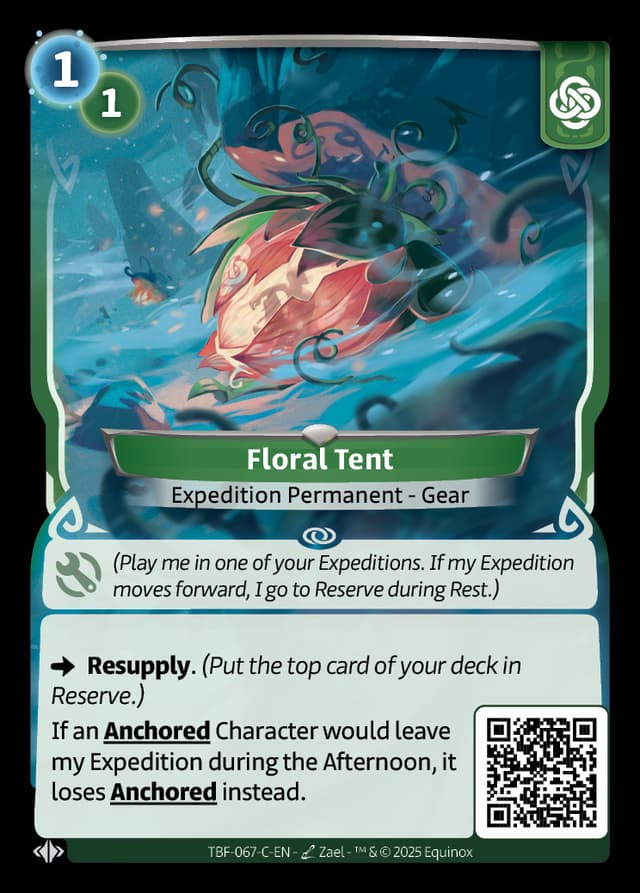

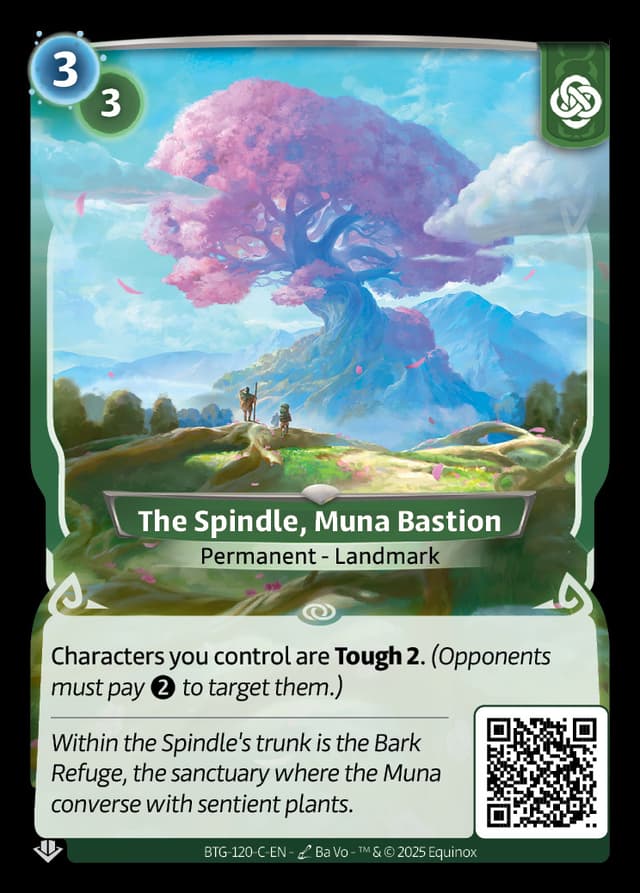
Perhaps the most impactful addition from Trial by Frost, Floral Tent does immense work to fight against Teamwork Training and Off You Go!, which are, coincidentally, the premier removal spells being played by the two other best heroes in the game currently, Afanas and Sigismar. The fact that for one mana it Resupplies when entering from anywhere is just additional free value in the deck, and also makes for a good play to pass priority and gain more information about how to sequence.
I’m torn on the inclusion of The Spindle, which I’ve gone for a split on the common and rare versions due to the 15 rare limit. It helps out majorly against Afanas’ Beauty Sleeps and Off You Go!, and does decent work against all the spot removal flying around in Sigismar and Fen, but is oftentimes incredibly awkward to find a good time to run out. I don’t entirely hate it, but it’s definitely more of a necessary evil, though the synergy the rare copy has with Spindle Harvester is a point in its favor.
Conclusion
I love this deck. It has a lot of redundancy built in, it’s capable of very strong starts that can snowball out of control, and has a lot of mana-efficient tricks to put up a lot of stats very quickly. The deck feels incredibly powerful when the engine is running and also doesn’t seem to have a terrible matchup, though Sigismar is still a tough one.
If you have any questions on the deck or card choices, feel free to reach out to me on any of my social media channels.
Just getting started with Altered? Then check out my guide to the Muna starter deck here.

